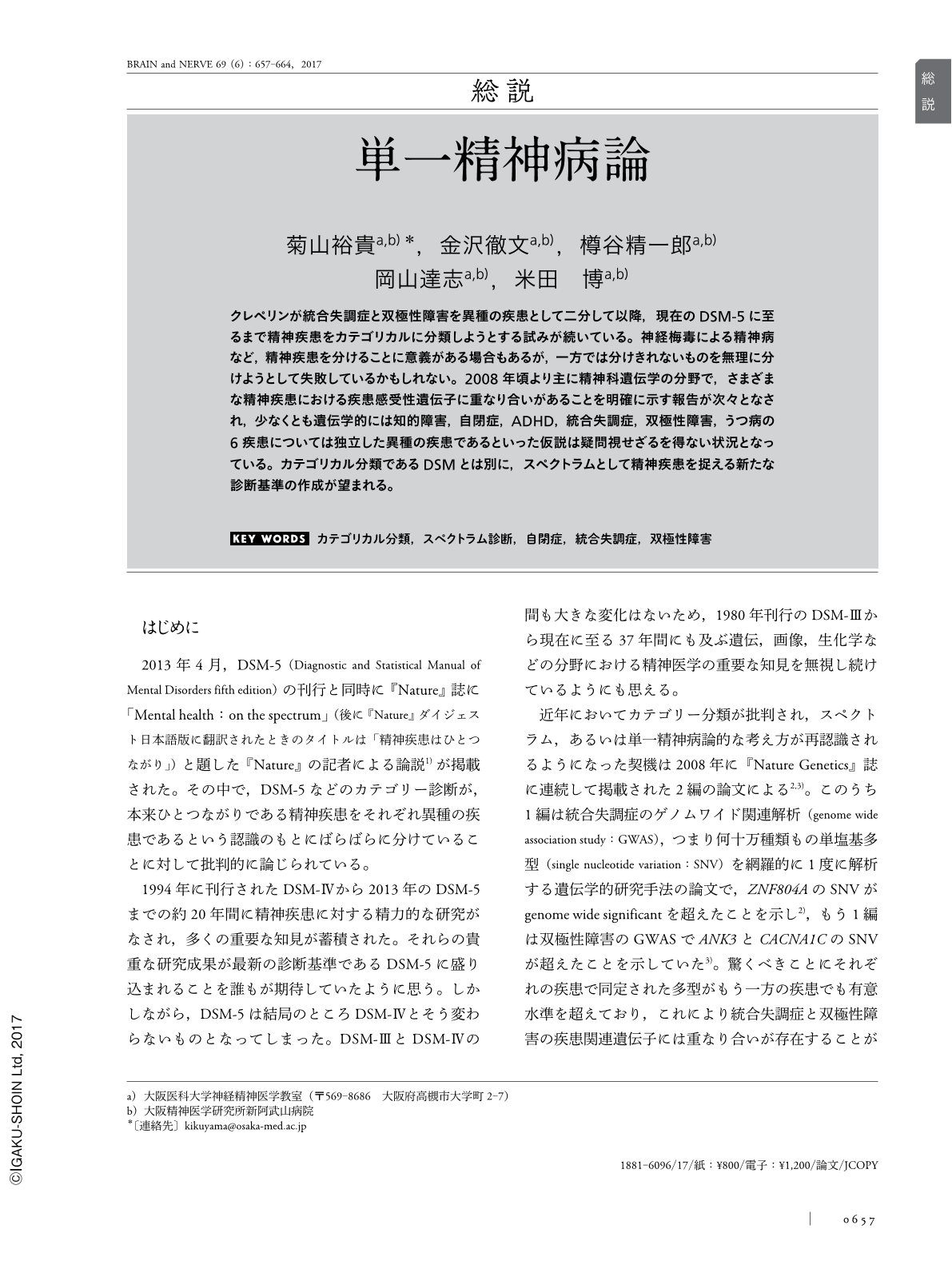Japanese
English
- 有料閲覧
- Abstract 文献概要
- 1ページ目 Look Inside
- 参考文献 Reference
クレペリンが統合失調症と双極性障害を異種の疾患として二分して以降,現在のDSM-5に至るまで精神疾患をカテゴリカルに分類しようとする試みが続いている。神経梅毒による精神病など,精神疾患を分けることに意義がある場合もあるが,一方では分けきれないものを無理に分けようとして失敗しているかもしれない。2008年頃より主に精神科遺伝学の分野で,さまざまな精神疾患における疾患感受性遺伝子に重なり合いがあることを明確に示す報告が次々となされ,少なくとも遺伝学的には知的障害,自閉症,ADHD,統合失調症,双極性障害,うつ病の6疾患については独立した異種の疾患であるといった仮説は疑問視せざるを得ない状況となっている。カテゴリカル分類であるDSMとは別に,スペクトラムとして精神疾患を捉える新たな診断基準の作成が望まれる。
Abstract
Since E. Kraepelin isolated schizophrenia and bipolar disorder as heterogeneous diseases, attempts to categorize mental illnesses have continued to the DSM-5. Meanwhile, cases of psychosis occurring as a result of neurosyphilis have been reported. Whilst in some cases it is useful to divide mental illnesses, in others imposing such classifications may be not be feasible. Since 2008 numerous papers have been published showing that the same genes are related to an increased incidence of several psychiatric diseases including intellectual disorder, autism, ADHD, schizophrenia, bipolar disorder, and depression. This suggests that the theory that these are separate and heterogeneous diseases should be rejected. Aside from the categorical classification in the DSM, it is desirable to create new diagnostic criteria that capture mental illness as a spectrum.

Copyright © 2017, Igaku-Shoin Ltd. All rights reserved.


